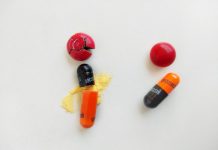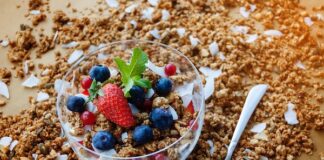During the colder months with decreased daylight hours, the sunshine vitamin becomes better known as the wintertime deficiency. When the chief way to receive your vitamin D is hiding out you need to up your game to receive the bone building, immune system defender.
 Other than catching rays by sun tanning on a snow pile or moving to Hawaii, you can eat foods that are rich in vitamin D. Although there are few dietary sources that are naturally high in vitamin D, fatty fish like salmon, mackerel or cod liver oil are among the top providers. Egg yolks and shitake mushrooms (and other sun-ripened shrooms) are also high up on the sunshine supplement list. Up your milk intake during the sunless months because nearly all milk is fortified with vitamin D whether it is non-fat, reduced fat or whole. Other fortified foods that are rich in vitamin D are yogurt, margarine, breakfast cereal, bread or orange juice so carefully check the labels to be sure they contain additional vitamin D.
Other than catching rays by sun tanning on a snow pile or moving to Hawaii, you can eat foods that are rich in vitamin D. Although there are few dietary sources that are naturally high in vitamin D, fatty fish like salmon, mackerel or cod liver oil are among the top providers. Egg yolks and shitake mushrooms (and other sun-ripened shrooms) are also high up on the sunshine supplement list. Up your milk intake during the sunless months because nearly all milk is fortified with vitamin D whether it is non-fat, reduced fat or whole. Other fortified foods that are rich in vitamin D are yogurt, margarine, breakfast cereal, bread or orange juice so carefully check the labels to be sure they contain additional vitamin D.
Click here for recipes with a healthy boost of vitamin D.
According to the Vitamin D Council, your diet may not be a satisfactory source of vitamin D. People often don’t pay close enough attention to the recommended daily intake through their diets and often nutritious sources contain too little vitamin D to be of benefit. A replacement for UV exposure is a vitamin D3 supplement that will ensure you don’t become a victim to “d-ficiency” this winter. Check with your physician to ensure you are receiving your customized amount of supplementation.
However you choose to get your vitamin D intake this winter season, be sure you are getting enough on a regular basis. Aim to get 600 international units of vitamin D daily.









![Daily Bite [Make]: Philly Cheesesteak Stuffed Bell Peppers](https://dashofwellness.com/wp-content/uploads/2013/01/Philly-Cheesesteak-Stuffed-Pepper-Daily-Bite-1-100x70.png)
